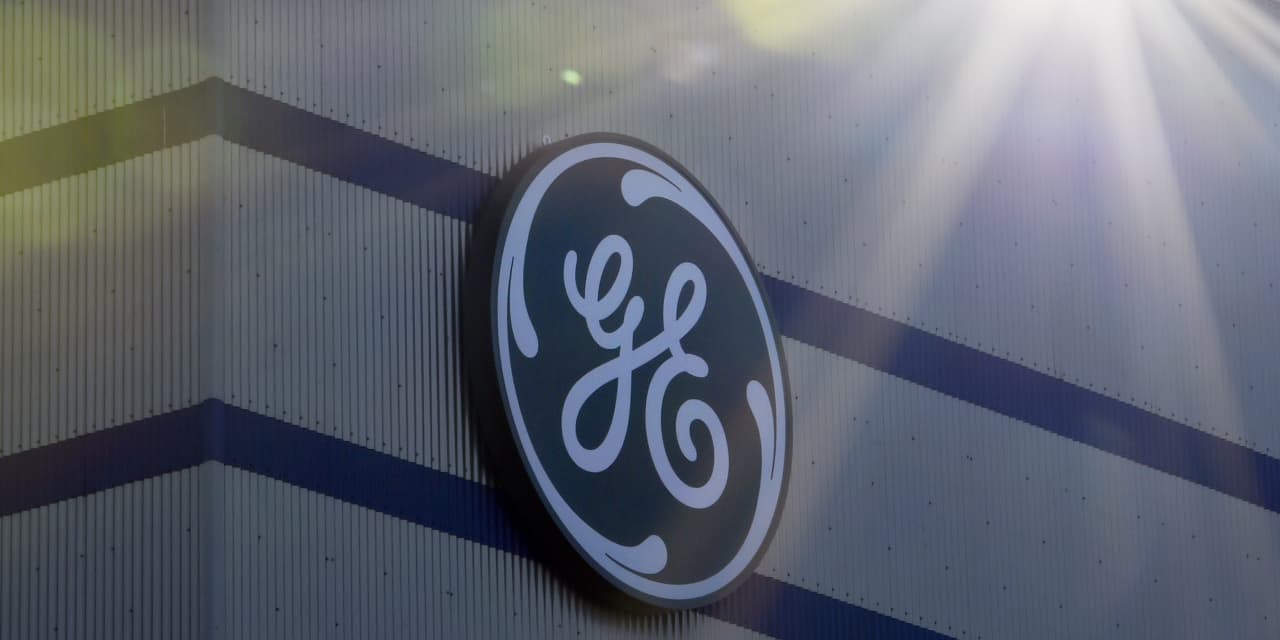The split is due to take effect April 2. A starting point in solving the valuation problem is to look at how similar companies trade in the marketplace.
Today, General Electric trades for about 14.5 times estimated 2024 earnings before interest, taxes, depreciation, and amortization, or Ebitda. That is very similar to nonfinancial and manufacturing companies in the
but that data point is only worth so much. There will be no “General Electric” for investors to reference in just a few weeks.
There will be GE Aerospace, which keeps the “GE” stock symbol and is considered to be an excellent business by most on Wall Street. That means it should get a premium valuation.
Aerospace and defense stocks in the U.S. trade for an average of about 18 times estimated 2024 Ebitda. There is a wide range, though, which partly depends on growth and margins.
trades for 26 times Ebitda. Its sales have grown more than 10% a year on average for the past few years.
Advertisement – Scroll to Continue
trades for almost 26 times while
sells for 11. They are similar companies, but Boeing’s profit margins have been depressed by problems with its 737 MAX jet and defense business. Investors expect margins to improve over time.
Heico achieves that growth partly via acquisition. GE Aerospace should be able to grow sales by 4% to 5% a year on average just by market growth alone. The number of planes in global fleets grows about 3% to 4% a year. GE gets some benefits for innovation as well as pricing.
At 18 times estimated Ebitda, GE Aerospace would account for roughly 85% to 90% of the value of the pre-spin General Electric. That leaves about $20 billion to $30 billion in value for GE Vernova—GE’s gas power, wind turbine, and electricity-grid businesses.
Advertisement – Scroll to Continue
Valuing Vernova is trickier than assessing what GE Aerospace is worth. For starters, Vernova has been working to improve underperforming business units for years. What’s more, some companies do some of what GE Vernova does, but no single company does everything. Few of those that are most comparable to Vernova are U.S.-based.
Japanese-based
makes gas turbines but does other things as well.
has power grid-related businesses, but it earns much higher margins than GE’s grid business.
and
both make wind turbines, so they offer some help to investors, but they don’t trade similarly to one another.
Another way to value Vernova is to look at U.S. manufacturing companies. They trade for an average of about 12 times estimated 2024 Ebitda. That might be a multiple GE Vernova can strive to get as it continues to improve margins and turn around its money-losing wind turbine business.
Advertisement – Scroll to Continue
GE Vernova didn’t make a bottom-line profit in 2023. It did generate positive free cash flow of about $440 million, which the company expects to improve to about $900 million in 2024. Ebitda in 2023 amounted to about $800 million. That should improve to about $2.2 billion to $2.4 billion in 2024.
That Ebitda implies a 2024 Ebitda margin of about 6% to 7%. Eventually, Vernova will have to get to double-digit Ebitda margins if it hopes to get that higher multiple.
Investors will hear how Vernova management plans to achieve that at an investor day in New York on Wednesday. Investors will hear from GE Aerospace management on Thursday.
Through Friday trading, GE stock was up some 90% over the past 12 months. The
and
were up about 27% and 17%, respectively.
Write to Al Root at allen.root@dowjones.com







